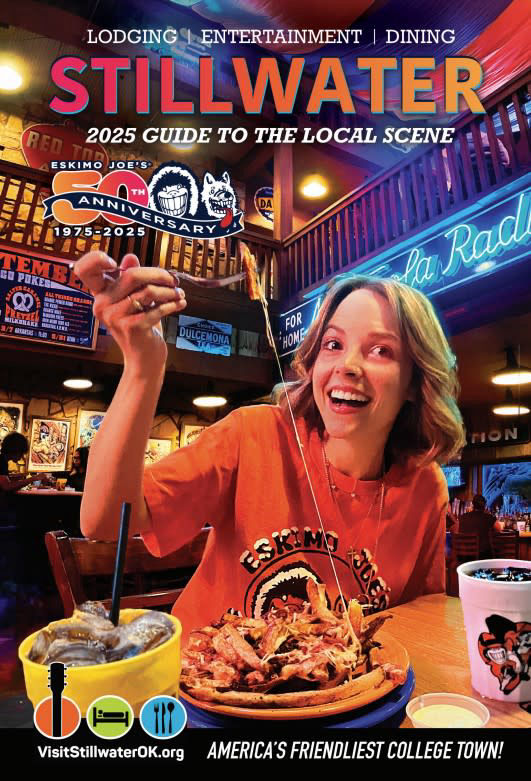History Unveiled: A Journey Through Time
Born from Dreams and Determination: The Great Land Run of 1889
Picture the scene on April 22, 1889: at precisely noon, the thunder of cannons echoed across the Oklahoma plains as an estimated 50,000 hopeful settlers surged forward in one of the most extraordinary events in American history. Among the dust clouds and racing horses, the site that would become Stillwater was claimed within hours, transforming from empty prairie to a tent city of 300 residents by sunset. This wasn't just another western settlement – it was the culmination of years of struggle between determined "Boomers" who believed this fertile land should be open to homesteaders and federal troops who repeatedly removed unauthorized settlers until Congress finally authorized President Benjamin Harrison to open the Unassigned Lands for settlement.
The community's name itself reflects the peaceful nature that would come to define Stillwater’s character. Local Native American tribes – Ponca, Kiowa, Osage, and Pawnee – had long called the creek “Still Water” because of its calm currents, while cattle drivers traveling north from Texas found relief knowing they could always find “still water” there even in drought years. The legendary Boomer leader David L. Payne himself may have stood along these banks and declared, “This town should be called Still Water,” cementing a name that would embody the community's enduring tranquility.
The Vigilantes: Visionary Founders Building for the Future
What sets Stillwater apart from other frontier towns was the remarkable foresight of its founding fathers, a group of seven young professionals who called themselves "The Vigilantes." These visionaries, ranging in age from 22 to 48, included lawyers, doctors, a barber, a banker, and an abstractor from states like Kansas, Indiana, Iowa, Ohio, and Pennsylvania. Rather than simply surviving the frontier, they immediately began planning for Stillwater’s long-term prosperity.
Robert A. Lowry, just 30 years old and often called the “Father of Stillwater,” donated 80 acres of his 160-acre homestead to secure the townsite placement that would ensure the community’s success. Dr. James Buchanan Murphy, at 33, established the first medical practice while serving on city council, as mayor, and as the county’s first coroner. These weren’t men content with a rough frontier town – they envisioned a sophisticated community that would thrive for generations.
Securing the Foundation for Growth: Education and Government
The Vigilantes' most brilliant strategic victories came in rapid succession during 1890. After bitter disputes with rival towns Payne Center and Perkins, Stillwater won the county seat when Congress passed the Organic Act on May 2, 1890. Even more significantly, on Christmas Eve, 1890, the territorial legislature passed a bill certifying Stillwater as the land grant college site. This crucial victory was secured when Dr. Murphy and Robert Lowry co-signed a $10,000 note to ensure that the land grant college came to Stillwater – a financial risk that would pay dividends for over a century.
In 1894, Oklahoma Agricultural and Mechanical College held the dedication of its first brick building, Assembly Building, later known as Old Central. This moment marked the transformation of Stillwater from frontier settlement to educational center, establishing the foundation for the intellectual vitality that continues to define the community today.
From Frontier Town to Modern Community
The early years required genuine pioneer spirit. Residents first settled in tents, small shacks, and dugouts, but these were quickly replaced as three sawmills produced wood for home construction. Wild game provided much of the food supply, with experienced hunters daily bringing home quail, prairie chickens, turkeys, and opossums. Community life centered on Amon Swope's two-story building at Ninth and Main streets, where his Bank of Stillwater and grocery store occupied the first floor while the first Sunday schools, church services, and town meetings were held upstairs.
By 1889's end, eighty Main Street buildings were completed, and citizens celebrated by erecting a flagpole seventy-six feet high with a huge flag and lantern to guide travelers to Stillwater. By statehood in 1907, downtown Stillwater was home to more than 50 buildings including several banks, churches, grocery stores, hotels, and department stores.
The Twentieth Century: Stability and Growth
After an estimated ten thousand homesteaders made the 1893 run into the Cherokee Outlet, Stillwater remained a quiet agricultural community for many years, with Oklahoma A&M College becoming its principal economic base. The population more than doubled between 1910 (3,444) and 1930 (7,016), and grew to 16,007 in 1940. These were known as the "country years" when Main Street businesses were home owned, doctors' and lawyers' offices were upstairs in downtown buildings, and children walked to Jefferson and Lincoln schools.
Concerned about the decrease in the college’s enrollment during World War II, leaders in 1951 formed the Industrial Foundation to expand the city’s economic base, diversifying beyond agriculture and education to create the stable, diverse economy that attracts physicians today.
Today’s Stillwater carries forward the values and vision of its founding Vigilantes – a community built by people who believed in planning for the future, investing in education, and creating a place where families could thrive for generations. The same pioneer spirit that transformed empty prairie into a thriving community in a single day continues to drive innovation and growth, while the peaceful waters that gave the town its name still reflect a community where tranquility and progress exist in perfect harmony.
